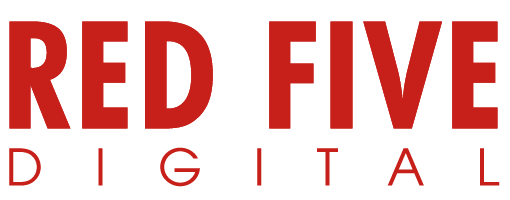According to the Netcraft Web Server Survey, there are about 1 Billion websites today. A significant increase was noted by 2016 to 2018 from 900 Million to 1.7 Billion and holding to 1 Billion level until today. From 1 website in 1991 to 1 Billion today, this means that competition also arises. May the website be in the form of a blog, e-commerce, online courses, or personal branding, everyone is taking the chance and maximizing it.
And as years come and go, different types of technology also emerges affecting the way we see and engage. A good website five or ten years ago does not mean it’s still a good website today.
As a website owner, our main role is to ensure that our website always up to date or as they say it should be “modern” and always provides the best experience to our audience. To guide you, here are narrowed twelve elements that you need to consider in keeping your website a good one.
1. Easy Navigation
Don’t let your visitors especially the first-time user, experience difficulty on moving in and on different sections of your site, instead provide them with a simple and hassle-free one.
A modern website lets the user explore it continuously without over complicating things. Let them find all the necessary information they need as soon as possible before taking any other action or step. Keep it simple and obvious so they will be happy and come back for more.
2. Overall Layout and Visual Appearance
Make sure that your site finds balance on every element visually from layout, color, content, and everything needed. In addition, visual aspects also need to be consistent in branding as you market it across different platforms like social media to reach a potential customer.
Let your brand remain on the visitor’s mind and remember you the way they see and experience your site.
3. Color Scheme
Did you know that 85% of shoppers base their product purchasing decision based on color and color increases brand recognition by 80%? This is how powerful colors are. Colors convey messages, story, as well as creates emotion, thus, choosing color schemes for your website shall be in great harmony.
A color scheme of modern web design is always based on the target audience, overall demographics and of course the brand you are carrying. Never pick a color based on your favorite, gut feels or because it is just a trend.
4. Content
As Bill Gates said, content is the king. And yes, until now, still it is the one. Content is the heart of a website. The main reason we create a website is to freely interact with our audience in wide terms. It is in content that we deeply converse with them and serve their needs and it is our responsibility to provide necessary information that will help them.
Personally, content creation shall be based and always come from the point in yourself that you wanted to provide them the best. When you make this as your mantra or intention, you can fully deliver high-quality content, unique and always updated that your audience will surely appreciate. Remember to serve them first with all your heart and the rest will follow.
5. Typography
As you can observe each element has different roles and are complementary. And just like that, good content is not enough with a bad or a font that is hard to read. Imagine you are so excited to read a blog, however, you can’t understand the whole story because the font is not readable.
In choosing fonts, consider font type, weight, and readability. Make sure to use easily understood like the sans-serifs and font size of 16 pixels that are widely used now. In terms of weight, primary heading and body font shall complement each other; primary must have larger font and weight than the latter. Check out typography trends where you can explore the pairing of fonts for your website.
6. White Spaces – Design Has to Breathe
White space is important to balance design elements and have better visual communication. White space is the area between each element including columns, lines, figures or typography providing visual breathing room for the eye.
White space is necessary to a modern web design to increase content legibility, interact more, to highlight “Call to Actions” or any content needed to be highlighted. Your audience wanted to see a tidy site indicating finesse and ingenuity, thus adding this to your website will help you to achieve it.
7. Quality Images
By all means, we all know that appearance really does matter. According to researched complied by 3M, visuals are processed 60,000 times faster than text. Images help us tell a story and help our visitors to fully understand and appreciate our content.
High-quality images also increase trust between you and the visitor. It shows them how clean, secure, and well-maintained your website is, encouraging them to take action.
In addition, putting the right description and title on your high-quality images increases the chance of SEO recognition, so the next time you include images, make sure to label or put a title on it.
8. Responsive Design
According to StatCounter, mobile web browsing has been steadily growing since 2009. People keep on emerging in using gadgets. Mobile and tablets have become part of our routine since it is easy to use, handy and can always be used anywhere and anytime, therefore you should ensure that your website shall be flexible and easily adapts across all devices.
A modern website that is good in desktop shall also provide an equal experience to mobile or tablet users, thus, fonts, photos, screen size, and orientation shall work accordingly. As technology moves faster, we should keep enhancing our website to be fully responsive. No one knows what’s the next gadget they will be using, so always keep ready!
9. Email Integration
There are around 54% email users in the world that also play a big role in your website. Make sure to include a contact form or an email address on your website for them to easily reach you and of course, never forget to have a sign-up form as well to get your audience information and include them on your mailing list.
Email Integration is important because you can immediately update your audience on the current status of your website; whether you are having new content or a new product; you can narrow down your target audience through email customization, the more specific, creative and as you pinpoint their needs, the more your audience to interact.
Email is like speaking to your audience face to face so let them feel your presence and significance.
10. Telling Your Story
The second most important part of your website next to the homepage, your “About Us” section should not be neglected. This page reflects who you are and everything about what you are doing.
In creating this, avoid generic messaging and focus on how you can help the audience or visitor. This section allows you to communicate and engage with the audience about you. Three techniques that you can apply are:
- Answer questions Who, why, what, when, and how. Help your visitors understand what your business is or your key areas.
- Share your unique identity. Tell why your business is “special”. Let your authentic voice be heard and have a more friendly and real conversation with the reader.
- Tell your story. I guess every individual is always moved by a story. Tell them how the business started, who are the team members behind and how you’d come up this far. Telling a story is one of the effective ways of engaging, attracting and building trust with them and hopefully, generate a lead.
11. Fast Website
Performance is a foundation aspect of good user experiences and a good characteristic of a modern website. As the web evolves continuously, people’s behavior does too, and everything about your website does not matter if it loads slowly. Chances are your visitor will become impatient and look for another website where they can enjoy and see what they want. With this, your website shall blend along to keep them going.
These are several case studies shows how performance or load limit affects how the visitors take action. “Pinterest increased search engine traffic and sign-ups by 15% when they reduced perceived wait times by 40% and COOK increased conversions by 7%, decreased bounce rates by 7%, and increased pages per session by 10% when they reduced average page load time by 850 milliseconds, while the BBC found they lost an additional 10% of users for every additional second their site took to load and DoubleClick by Google found 53% of mobile site visits were abandoned if a page took longer than 3 seconds to load.”
So always ensure that your site loads fast! Take note that is also affecting your search engine visibility.
12. Consistency
And of course, last but not least, a modern website shall be consistent. Everything that you have decided to do from the start; from the web design to content and all, you shall set it to the expectation of your audience as they visit the site from time to time. Let them feel that it was intentionally made for them.
Conclusion
As web design emerges and with different elements every now and then, we hope that this list helps you improve and let your audience have the best experience on your website. Remember that a modern website never gets stagnant but always keeps on the growing, improving and adapting based on the needs.
Ready to work with a full-service digital marketing team? Contact us today and let us discuss you needs!


